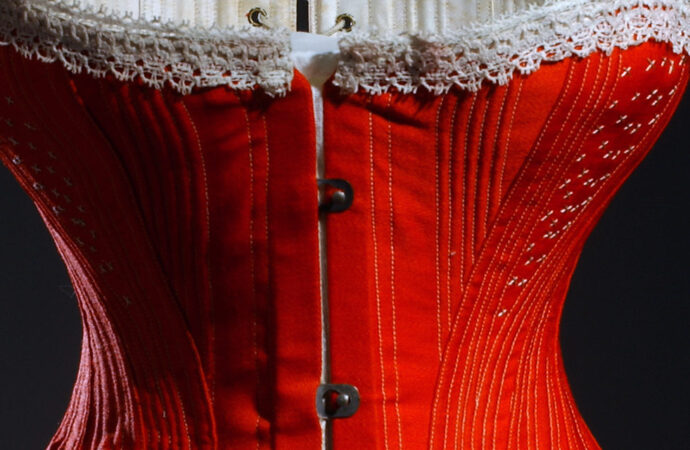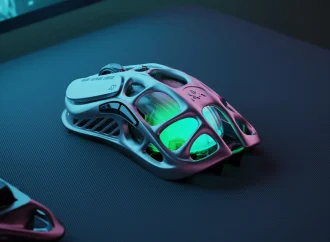Whenever discussing fashion throughout history, corsets have often been a matter of controversy. As they are believed to have dramatic effects on the wearer’s body from misplaced organs to broken ribs. We come across statements like “Women couldn’t breathe in corsets and fainted frequently. That’s why there are fainting couches.” “But did you know women
Whenever discussing fashion throughout history, corsets have often been a matter of controversy. As they are believed to have dramatic effects on the wearer’s body from misplaced organs to broken ribs. We come across statements like “Women couldn’t breathe in corsets and fainted frequently. That’s why there are fainting couches.” “But did you know women had ribs surgically removed to tight lace?” “Women were forced to wear corsets.” “Corsets were painful and restrictive.” etc. These ideas have solely emerged because the 21st century’s understanding of corsetry is riddled with myths and conjectures based on a lack of practical experience wearing and researching these garments. And based on its bad reputation it seems impossible to imagine a comeback for the corset in an era that is marked by body positivity and self-love, but the garment hailing from European courts of the 19th century is making a comeback in forms that exalt the body without constraining it. Corsets have become more beautiful and empowering in the year 2021 than they’ve ever been.
What were Corsets?
Women have always worn supportive undergarments to support the weight of their breasts. Given the fact that bras are fairly newer garments, women wore corsets for support. Unlike the tales, corsets were never meant to achieve a certain hourglass body shape or restrict body movements. Corsets were worn from the 16th century when they were called a pair of bodies till the late 16th/early 17th century where they were called pair of stays and through the 18th century, they evolved from stiffened fabric to a structured garment with channels of whalebone and were finally called as corsets.
Despite the general understanding of corsetry as waist cinching garments, corsets were not constructed to reduce waist sizes in extreme measures. In fact, in a study conducted by Bath’s museum of costume it turned out that while examining 1000 Victorian dresses, the smallest waist size of a corset was 21.5inches. While studying the corsets we need to keep in mind that the average waist size in 1866 was around 28-29 inches, many of which were malnourished. Corsets being a complex piece of garment provided support to all parts of the torso by applying equal pressure to all the parts instead of just tightly synching the waist. The main function of a corset was to simply provide bust support, created a clean, crisp line on which the upper layers of fabric would lay, lift the weight of several layers of skirt that women wore at hips and provided the desired silhouette through bone and pad placements.
We associate the word with these tight-lacing “oppressive” garments that women wore for hundreds of years without knowing that tight-lacing of corsets was an optional trend that was added to the construction and durability of corsets in the mid-1800s. Women were allowed to wear an extremely informal alternative to corsets, a garment called “jumps.” These garments had minimal to zero boning in them and were exclusively worn at home. These garments provided support but offered no shape. They were often worn by pregnant women or sick women as well. Not just women, corsets were worn by men as well to give their bodies a well-defined structure and support.
Why did corsets become infamous?
The idea that the corsets were and are dangerous has been sensationalized by doctors in the past 100 years. The horror stories of ribs breaking and misplaced organs having been debunked countless times for being exaggerations. However, very little scientific proof that corsets were as damaging as they claim.
Patriarchy added to corsets being ridiculed for over centuries, the industry of corset businesses were mainly owned by “Madams” and employed over hundreds of other women which threatened the idea of “obedient women” of men. During the Victorian Era the idea of an “obedient wife” was prevalent and the women’s rights movement was gaining popularity. Amidst all this fashion was the only way for women to express themselves, to be more confident in themselves. Thus, men took this opportunity to oppress and ridicule women’s fashion.
Adding to that is the superiority complex that people of now generations have over the past generation since it is easy to look at people of the past and say “they’ve got it all wrong, we’ve got it all right.” It’s easy to make women victims of fashion and say that women wore corsets exclusively for the male gaze.
Corsets were simply Undergarments
Corsets were garments that were specifically made to the measurements of the wearer. There was no “one size fits all” that every woman of every shape and size had to squeeze themselves into. The 18th and 19th-century corsets had adjustable shoulder straps and adjustable lacing for the wearer to adjust to their comfort.
Realistically, a garment that is so physically damaging, uncomfortable, and restrictive wouldn’t have lasted for centuries. If corsets were something that was so massively oppressive, women would have discarded it long ago. But they didn’t instead it was a major fashion item for centuries and women at that time went on about their work comfortably. Corsets have now made their comeback are increasingly popular among Gen-Zs.
The corset shouldn’t be viewed as something oppressive, and women of the past shouldn’t all be thrown into the corner as victims of their fashions. Women were making history, through leadership, bravery, and deeds both big and small, and they did that all in a corset.



















Leave a Comment
Your email address will not be published. Required fields are marked with *